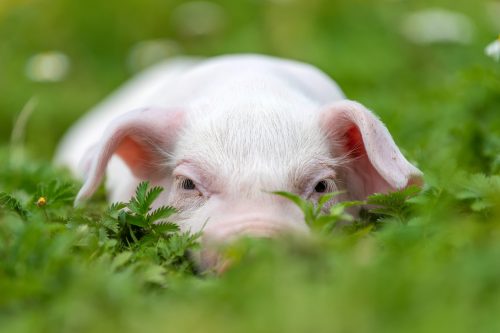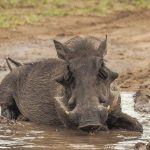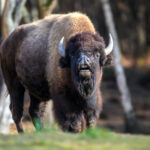To answer this topic, let me first provide some background on human vision. Cones are a type of cell that humans have in their eyes. Cones are what let you perceive different colors like blue, red, green, and a combination of the three. When a person is partially colorblind, at least one sort of cone is defective. That’s why some color-blind people have trouble seeing one or two particular hues but are perfectly capable of recognizing all other colors.
Total colorblindness is caused by a deficiency in all cone cells in the eyes. This is a rare occurrence, yet it occurs when a person perceives no color at all. As a result, hogs have dichromatic vision, which means they only have 2 kinds of cones to blend colors, compared to our three. Simply said, hogs have a narrower color palette than humans.

Hogs can see low-wavelength light (blue light) quite well, but as the wavelength grows, they have a harder problem interpreting the light visually. Higher wavelengths are associated with red and green light, which is why hogs have a harder time identifying it. Pigs have excellent vision for a farm mammal, being able to discern a wide variety of color wavelengths but unable to see color gradations such as ombre effects. Redecorating the pigsty in colors that your pig can recognize may help her relax.
Can Pigs See The Color Orange?
No, it is very difficult for hogs to detect the orange color. Light wavelengths are measured in nanometers, as mentioned in the previous section (nm). As I previously stated, the higher the wavelengths, the more difficult it is for the hogs to see the color. When the wavelength hits 520 nm to 540 nm, hogs become colorblind.
This is the color spectrum that is regarded as the “genuine green” light color range’s core. The majority of green lights marketed for hunting have a wavelength of 540 nm. Orange hunting lights with a wavelength of 620 nm and higher are manufactured. As you can see, it is nearly 100 nm longer than green light, making it a more realistic option for nighttime hog hunting.
I appreciate that hog hunters, both amateur and professional, may disagree with my conclusions based on their personal experiences. That’s all right. Some people advise against using any lights at all since they will scare the pigs away. Because the majority of people reading this are novice hunters (thus the name of the page), I want you to be as ready as possible while going hog hunting.
Some of us, unlike many hog hunters who own their acreage and may come and go as we choose while trying out different light colors, do not have that luxury. If you’re like me and only go hog hunting a few times a year, you’ll want to make the most of your once-in-a-lifetime opportunity to bag a hog. Make use of red light.
Can Wild Boar See In The Dark?
Other animals, such as deer and raccoons, employ a reflector behind the retina to produce ocular reflectivity, but hogs don’t. Hogs don’t have this layer; their eyes don’t reflect light, and their night vision is only adequate at best.
Pigs like to sleep in dim light or complete darkness, meaning that the sleeping areas in the pen should not be too lit to encourage resting behavior.
What Do Wild Hogs See?
Pigs detect mostly red, green, and blue wavelengths, according to experiments conducted by the Pig vision Institute. Pigs will have a higher visual response when these hues are blended, such as in a multicolored pig diet with red, green, and blue pellets than when they are only exposed to one color. Pigs also tend to see objects as solid colors; they may see the blue sky but not clouds or rainbows.
Are Moose/Elk and Pigs/Hogs Colorblind?
Moose/elk color vision explained: Moose and elk have poor color vision compared to humans. They mainly perceive shades of blue and green and struggle to differentiate between red and orange. On the other hand, pigs/hogs have dichromatic color vision, perceiving blue and green but not red. These distinct visual abilities contribute to how these animals navigate and interact with their environments in nature.
Can Hogs See The Color Red?
Since hogs are not colorblind, they have trouble seeing certain color wavelengths. Hogs have trouble distinguishing colors in the green and red wavelengths. Even though pigs cannot detect red or green light, they are drawn to brightly lit areas rather than shaded areas.









